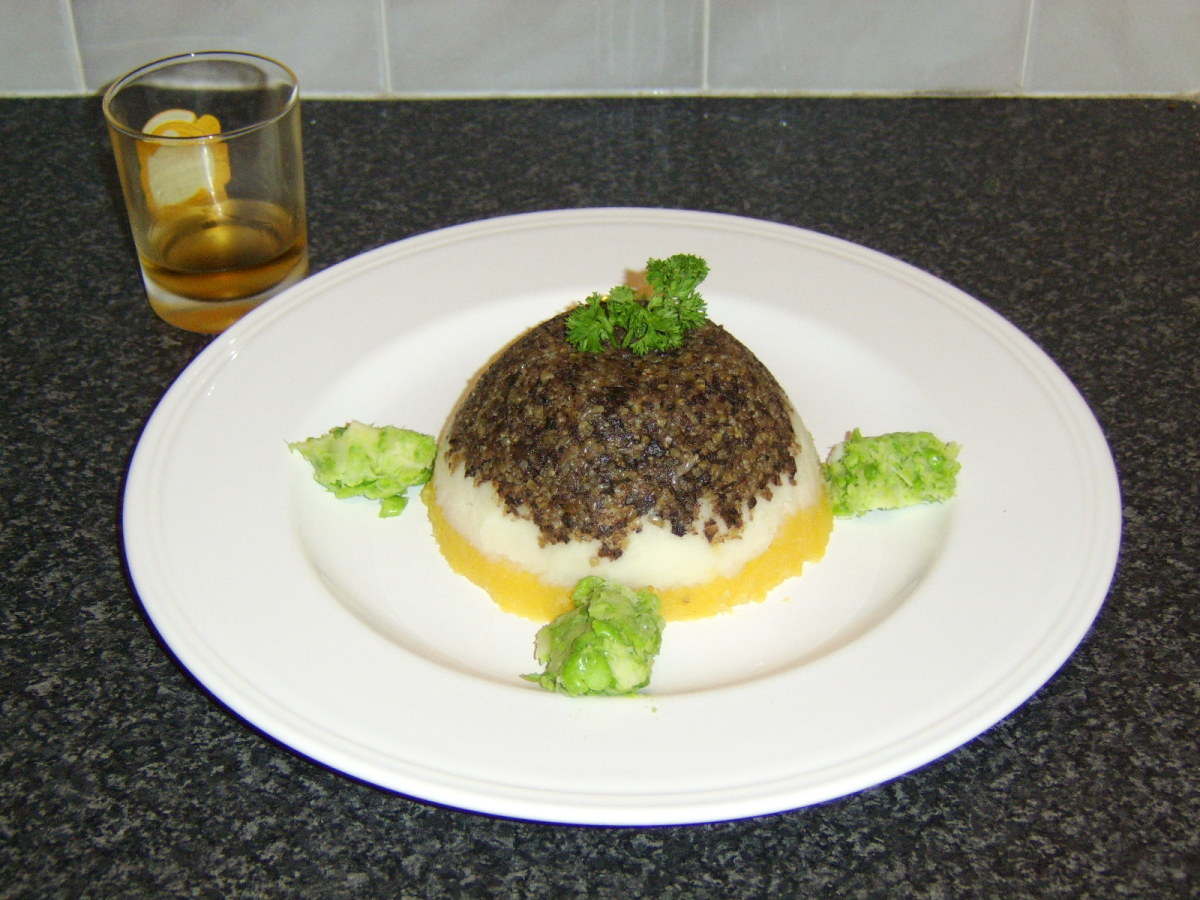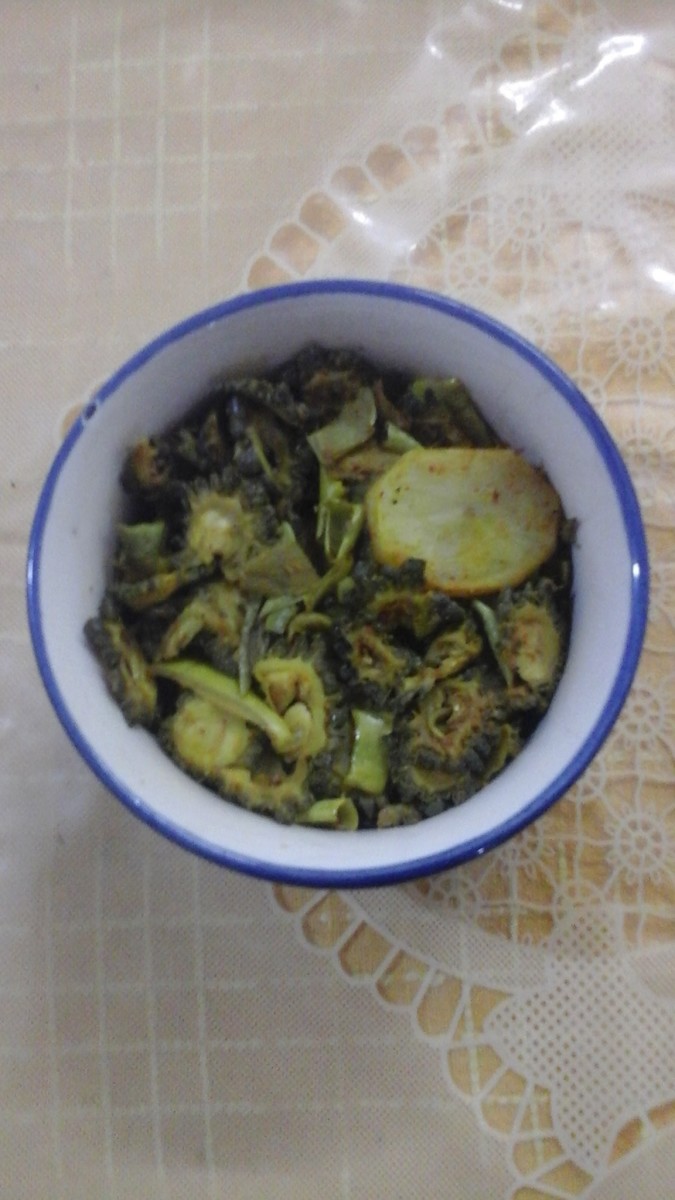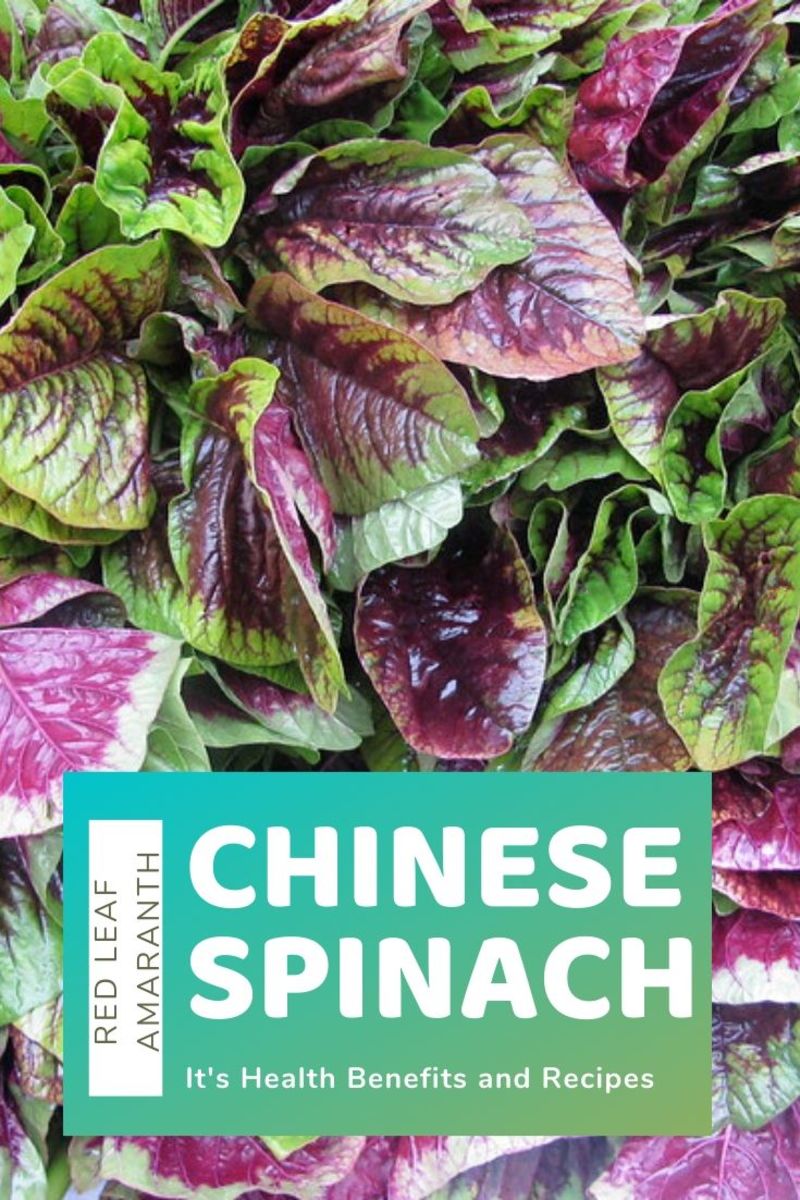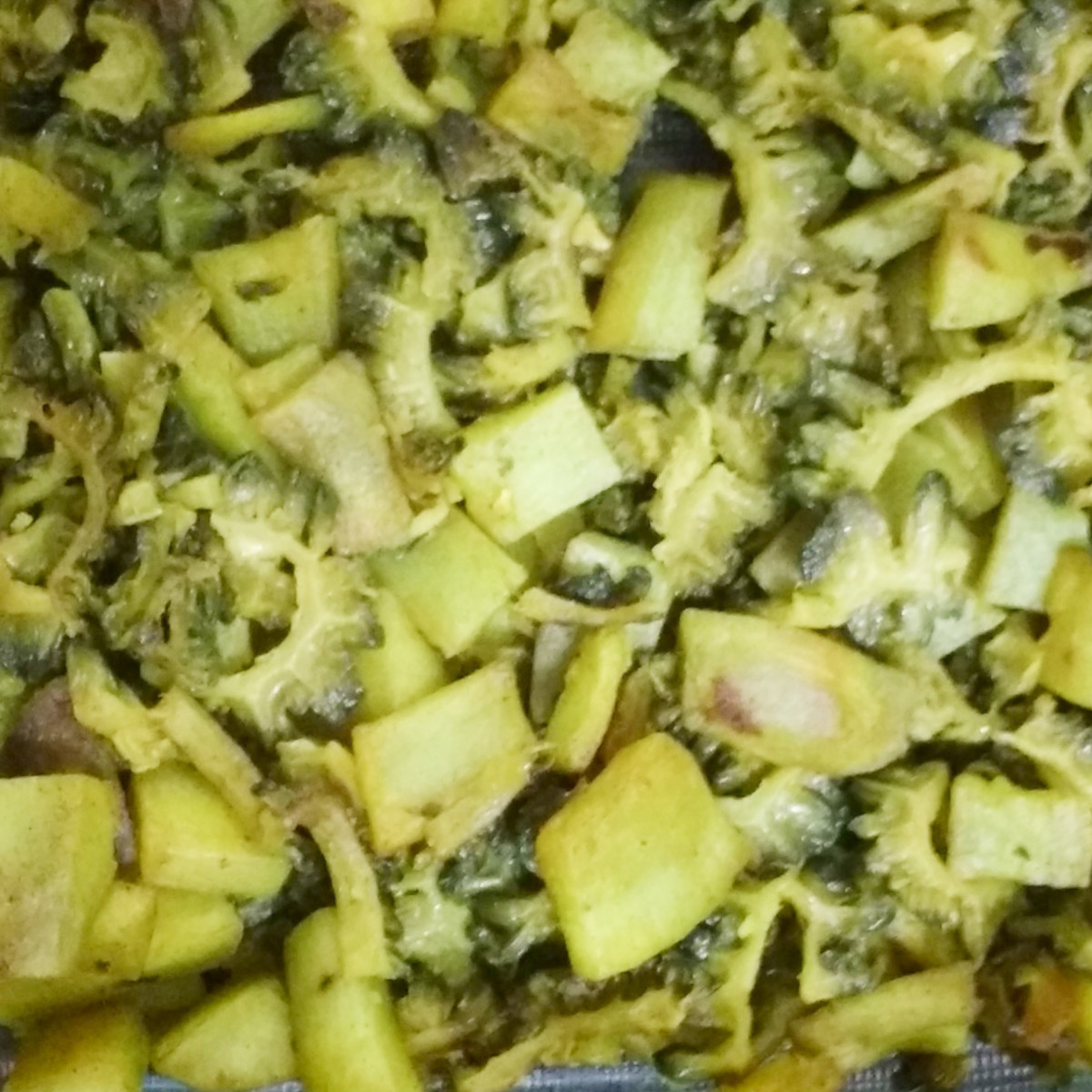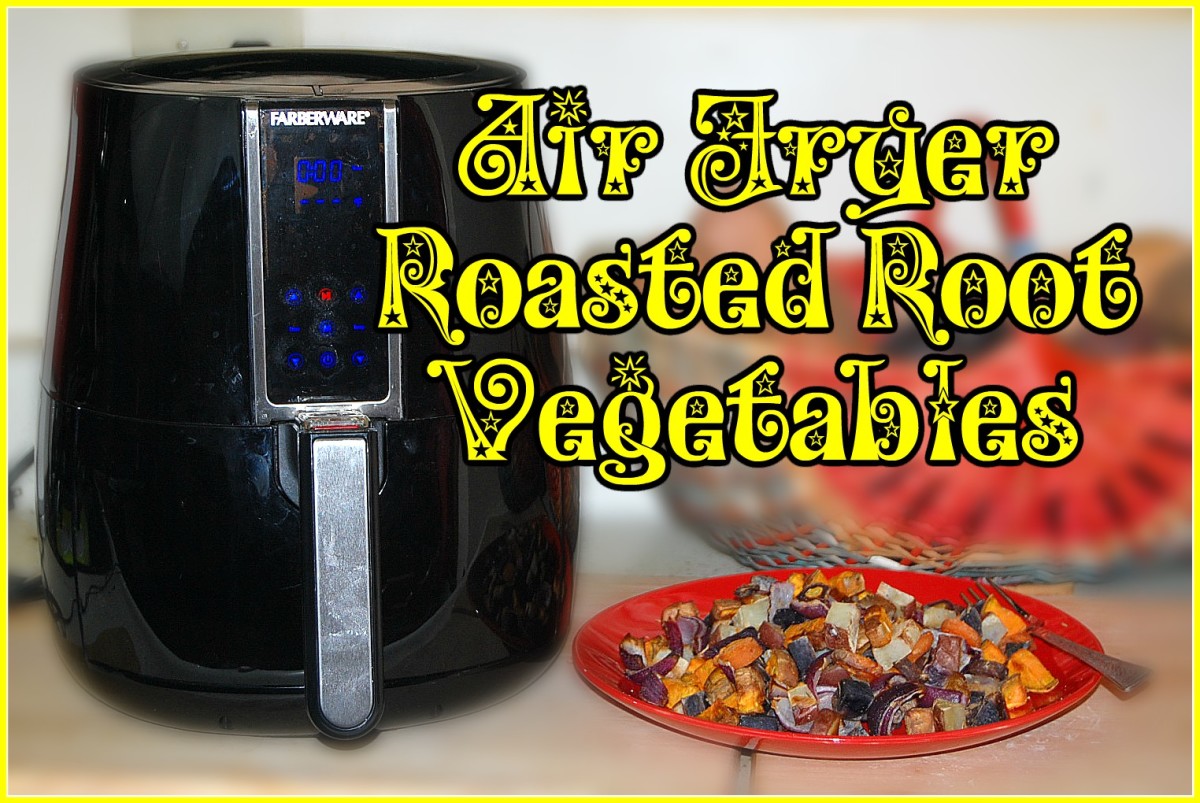The Humble Rutabaga - History, Nutrition, Basic Easy Recipe
Freshly Harvested Rutabaga
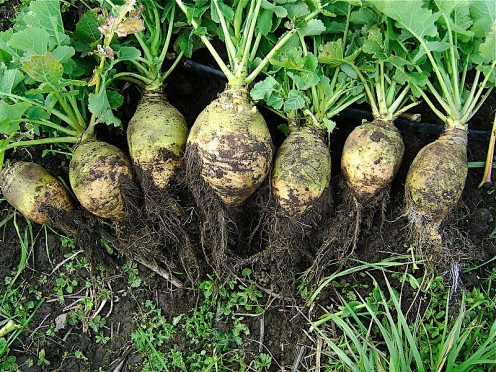
There is nothing pretentious about the humble rutabaga. It has no attractive red skin like a tomato, no spicy kick like a radish, and no flamboyant deep green and red leaves like the Swiss chard. You will almost never see it on a restaurant menu in the US, and it is often bypassed when offered in the produce sections of supermarkets. Yet, this root vegetable is delicious, nutritious, easy to cook, and inexpensive. If you are not a rutabaga fan now, perhaps its interesting history, nutritional qualities, and ease of cooking will change your mind.
What Is a Rutabaga?
Commonly called a swede, turnip, root turnip, or yellow turnip, the rutabaga (Brassica napobrassica) is not a turnip at all but a cross between a turnip and a cabbage. It is a member of the Cruciferae family which includes the more familiar turnip, broccoli, cabbage, kale, mustard, bok choy, and rapeseed (canola).
The large, bulbous root of the rutabaga is what is commonly eaten, although the leaves are edible as well. The root flesh is a creamy white to yellow color, slightly bitter tasting, and either tender or woody depending on its age; the older the rutabaga, the larger and less tender.
A Bit of Rutabaga History
No one can say when the DNA of a turnip joined with that of a wild cabbage, but the rutabaga was first found in Europe during the Middle Ages and was eventually put to use as both human and animal food. Sweden was a significant early European supplier of rutabaga, hence the name "swede". Eventually, the rutabaga found its way to England and then, in 1541, to Canada. By the early 1800s, rutabaga crops were common in the northern United States. *
The rutabaga was, and is still, associated with poverty and famine, even though it grew and flourished in British royal gardens in the mid-seventeenth century. In England during and after World War II, citizens relied on rutabaga to fill their bellies while so many foods were rationed. Today in England, it is doubtful that the younger generation knows how to cook a rutabaga. **
Rutabaga in Song
Since the humble rutabaga has been around, it appears that no one put its praises to song until the twentieth century.
Ithaca, New York, home of the Rutabaga Curling World Championship, treats spectators to a rousing rutabaga variation of Handel’s Hallelujah Chorus. (It’s a long video, and worth every minute!) The folks in Ithaca don’t leave the musical praises there. Visit their official site to hear the Rutabaga Curl Melody by Joe Crookston.
2010 Rutabaga Curling World Championship
Why Are Rutabagas Waxed?
Rutabagas are waxed to keep their moisture from evaporating through the skin. Waxing gives them quite a long storage life under optimal temperature and humidity conditions. When you buy a waxed rutabaga, it’s probably been in storage for some time, so place it in the vegetable bin of your refrigerator and plan on using it within two weeks.
Rutabaga Nutrition
One cup of cooked rutabaga contains approximately 70 calories and a scant one percent of the recommended daily allowance of sodium. The rutabaga packs a nutritional wallop in a tiny caloric package when it comes to vitamin C, calcium, potassium, and fiber. It also scores high in B vitamins. If you have special dietary needs, take a look at the complete rutabaga nutritional chart for additional information.
Preparing and Cooking the Rutabaga
The rutabaga needs to be peeled and cut before cooking. When I peel the skin from a rutabaga, I first cut off the root and stem ends with a heavy knife and then use a small paring knife to peel the skin in a spiral by starting at one cut end, working my way in thin bands around the root, and finishing at the other end. Although I am comfortable with this method, it is not the safest. Here’s another way:
Rutabaga Cut into Cubes
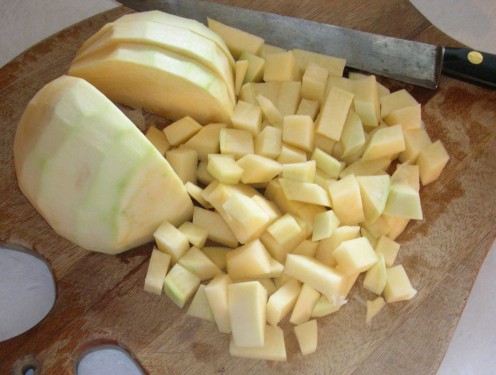
The rutabaga can be a tough cookie to cut depending on size. Use a heavy, sharp knife and be prepared to put some muscle into the cutting, especially when the rutabaga is larger and older. Cut into 1/2- or 3/4-inch cubes and then boil, as you would cut potatoes, until tender. Cooking time may take as long as an hour if the root is very woody.
Some find the rutabaga’s aroma as it cooks to be unpleasant to downright offensive. However, the final cooked rutabaga is sweet tasting (with hardly a hint of bitterness), with a good looking pumpkin color, and lacks the strong aroma present during cooking, although it still smells like a rutabaga. If the smell offends you, well, I hope you can get past that and reap the rewards of a tasty, nutritious treat.
Cubed Rutabaga Simmering in Vegetable Stock
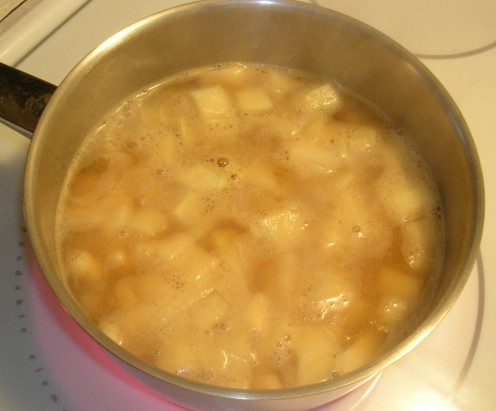
Rutabaga Cooked Down and Ready To Mash
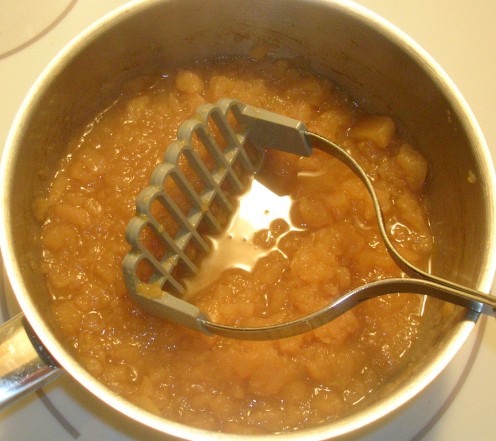
A Dish of Basic Easy Rutabaga
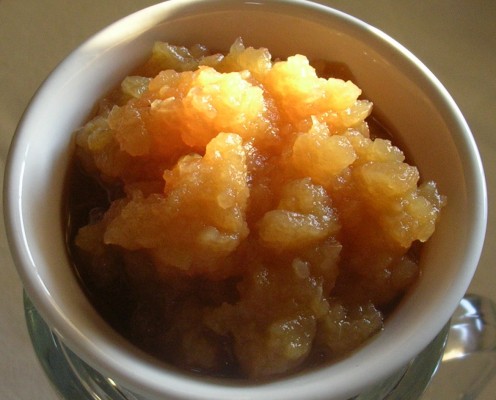
Basic Easy Rutabaga
I thank my mother for introducing me to the rutabaga through this simple recipe. Mom uses chicken stock instead of vegetable stock. Either version is delicious.
1 Rutabaga, 1-1/4 pounds, peeled and cut into 3/4-inch cubes
1-1/2 Cups vegetable stock
- Put the rutabaga cubes and vegetable stock in a heavy saucepan and bring to a boil on the stovetop.
- Cover the sauce pan, leaving the lid ajar, and simmer on low for 30 minutes.
- Test for doneness by piercing a rutabaga cube with a fork. The rutabaga is done when the fork passes easily through a cube and most of the vegetable stock has cooked down. If the pieces are still firm, simmer for another 15 minutes, adding a bit of hot water only if needed to keep the rutabaga from sticking to the pan, and test again. Depending on the woodiness of the rutabaga, you may have to go through this “re-simmering” process more than once.
- When done, mash the rutabaga, as you would a potato, and serve.
We don’t add any butter, salt, or pepper to this dish because the vegetable stock is loaded with flavor and the mashed rutabaga is naturally moist, unlike mashed potatoes.
Variation: Creamy Rutato (Rutabaga and Potato with Sour Cream)
2 Cups cooked, mashed rutabaga (from the Basic Easy Rutabaga above)
2 Cups plain mashed potatoes (no salt, butter, pepper, or milk)
1/8 Teaspoon salt
1/8 Teaspoon freshly ground black pepper
Sour cream
- Combine all ingredients except sour cream in a microwave-safe bowl and loosely cover.
- Microwave on high until piping hot.
- Portion out into plates or small bowls and top with a generous tablespoon of sour cream.
The rutabaga may lack good looks and suffer from an unfortunate reputation as a "famine" food, but it deserves a place of honor at the table for its earthy good taste and exceptional nutritional benefits. I’m eagerly waiting for one of the world's new style chefs to popularize this humble food by featuring rutabaga caviar on the menu of a five-star restaurant.
Things You Might Not Know about Rutabagas
- 10 Ways To Use Rutabagas without Eating Them
Rutabaga is as versatile a creative medium as it is a food. Here are 10 inventive ways to use the rutabaga without eating it.
Recipes appearing in Sally’s Trove articles are original, having been created and tested in our family kitchens, unless otherwise noted.


